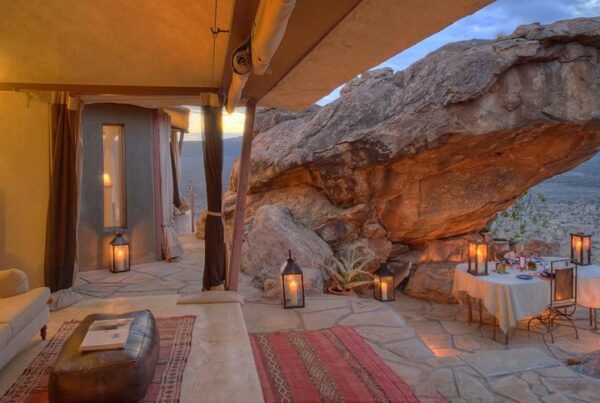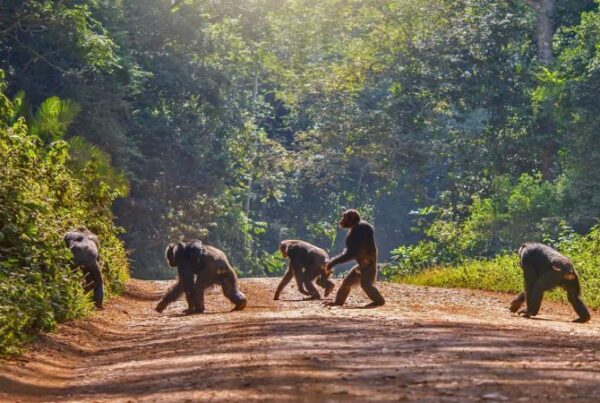Weekend Itinerary: Fort Portal Wildlife Photography Tips for Families
A Family Escape Framed Through the Lens
In the heart of western Uganda lies Fort Portal, a town surrounded by crater lakes, verdant tea plantations, and the foothills of the Rwenzori Mountains. Beyond its natural beauty, it has become one of the most treasured gateways for wildlife exploration and family travel. For families seeking to weave moments together while preserving them in photographs, Fort Portal presents an ideal blend of relaxation, adventure, and visual inspiration. The weekend rhythm in this town allows parents and children to immerse in nature, connect with wildlife, and master photography in a way that strengthens bonds while producing lifelong keepsakes.
Arriving in Fort Portal: The Gateway to Uganda’s Wild Side
The journey to Fort Portal from Kampala is itself a photographic prelude. The five-hour drive unfolds across undulating hills, villages, and lush farmland, preparing families for the serene landscapes awaiting them. As the first glimpse of the Rwenzori Mountains comes into view, travelers know they are entering a region defined by raw beauty. For those preferring comfort, private transfers are available, but even the public routes introduce families to the warmth of Ugandan life along the way.
Arriving in town, the relaxed atmosphere makes Fort Portal immediately welcoming. Markets bustle with activity, tea plantations glisten under the sun, and the surrounding crater lakes set the stage for an unforgettable weekend. Families quickly realize that beyond its beauty, the region carries a rhythm that is both adventurous and calm, ideal for travel with children.
Why Fort Portal Appeals to Families
Fort Portal is more than a picturesque town; it is an experience designed for family exploration. The destinations nearby provide safe, interactive, and educational adventures for younger travelers while offering abundant opportunities for parents to engage in wildlife and landscape photography.
The presence of Kibale National Park nearby, home to the highest density of chimpanzees in Africa, makes the region exceptional. Beyond primates, the crater lakes and wetlands surrounding Fort Portal create habitats for countless bird species, butterflies, and smaller wildlife that are easier for children to observe and for photographers to capture in detail. The accessibility of sites ensures that family members of all ages can comfortably join in the experience without fatigue or strain.
A Weekend Itinerary for Families
Day 1: Crater Lakes and Family Photography Sessions
The weekend begins with exploration of the crater lakes scattered around Fort Portal. These lakes, formed by ancient volcanic activity, shine like jewels against the green backdrop of the hills. Families can take leisurely walks around Lake Nyinambuga, a serene body of water surrounded by forest, where the reflections of trees and skies create natural frames for photographs.
Parents often find joy in teaching children how to capture simple yet powerful images of rippling waters, overhanging branches, and fishermen in dugout canoes. The soft morning light enhances the clarity of reflections, making these moments perfect for practice in family-friendly photography.
The afternoon can be spent visiting a tea plantation, where rows of green stretch endlessly over the hills. Such landscapes provide lessons in framing, symmetry, and texture, while also allowing children to witness the process of tea harvesting. Photographs of families walking through these plantations capture not only the scenery but also the shared experience of discovery.
Evening sets the stage for family portraits against the golden hues of the setting sun over the crater lakes, a chapter of the weekend where bonding and artistry merge.
Day 2: Kibale National Park and Chimpanzee Encounters
No family trip to Fort Portal is complete without a visit to Kibale National Park, located just a short drive from the town. Known as the primate capital of the world, this park offers families the extraordinary chance to encounter chimpanzees in their natural habitat.
Children often marvel at the playful behavior of these intelligent creatures, while parents delight in capturing their movements through photography. Wildlife photography here requires patience and respect; the soft forest light filters through dense canopies, demanding adjustments in camera settings to achieve clarity. Families learn to embrace slower shutter speeds, experimenting together with framing and focus.
The park is also home to colobus monkeys, red-tailed monkeys, and an astonishing variety of birds and butterflies. While chimpanzees remain the highlight, the richness of the forest ensures that families leave with memory cards full of diverse wildlife images. The shared excitement of spotting creatures among the trees becomes a bonding activity in itself, teaching children the importance of patience and observation.
Evenings may be spent relaxing in lodges around the park’s edge, where fireplaces and storytelling provide a warm close to an adventurous day.
Day 3: The Amabere Caves and Nature Walks
The final day of the weekend itinerary leads families to the Amabere ga Nyinamwiru caves, a site steeped in myth and natural wonder. Waterfalls cascade over rocky formations, creating an ethereal setting perfect for family photography. Children often find fascination in the legends associated with the caves, where culture and nature intertwine.
Short nature walks in the area reveal lush vegetation, butterflies, and birdlife, offering chances for families to refine their photography skills in capturing smaller, often overlooked details. Parents often find joy in framing shots of children interacting with nature, turning the camera toward moments of curiosity and laughter.
As the weekend draws to an end, the final photographs capture not only wildlife and landscapes but also the essence of family unity. These images become a collective diary of a shared journey, one that extends beyond the lens into the heart of memory.
Wildlife Photography Tips for Families
Capturing Children and Nature Together
One of the most rewarding aspects of family photography in Fort Portal is combining human connection with natural beauty. Parents are encouraged to focus on candid moments—children gazing at a butterfly, pointing at monkeys in the trees, or skipping stones along the lake. These frames hold deeper meaning than posed portraits, blending wildlife, landscape, and family intimacy.
Working with Natural Light
The region’s changing weather and soft highland light create opportunities for creative expression. Morning and evening light is gentle, ideal for family portraits and landscapes. Midday light, though harsh, can be softened by photographing under forest canopies or beside reflective waters. Families quickly learn that natural light is not a challenge but a gift when embraced with patience.
Teaching Photography to Children
Traveling with children provides a chance to introduce them to photography as a way of storytelling. By allowing them to hold a camera or smartphone, they are encouraged to capture the world from their perspective. Parents may find delight in reviewing these images, which often reveal details that adults overlook. Photography becomes not only a record of wildlife but also a glimpse into how children see their surroundings.
The Best Seasons for a Fort Portal Family Escape
The dry seasons, from December to February and June to September, are ideal for family travel. Trails are more accessible, and wildlife encounters are easier to enjoy without heavy rains. These months also offer clear skies and reliable light conditions for photography.
The wetter months, however, bring their own charm. From March to May and October to November, the landscapes burst into lush greenery, and mist shrouds the crater lakes. Though rain can be challenging, it produces dramatic, atmospheric photographs. Families who embrace these conditions often return with unique, painterly images that cannot be replicated during the dry season.
A weekend in Fort Portal offers families more than a short escape. It is a carefully woven story where wildlife encounters, scenic landscapes, and photography lessons merge into one unforgettable experience. The region provides not only the chance to see Uganda’s treasures but also to preserve them as a family narrative told through images. Each photograph becomes more than a visual memory—it becomes a symbol of time shared, bonds strengthened, and nature embraced.
Plan Your Family Adventure
For families seeking to capture these moments with ease and expertise, thoughtful planning enhances the experience. To make your Fort Portal wildlife photography weekend both seamless and memorable, it is recommended to book your Africa tours and safaris through WildHorn Africa, where every detail is arranged to ensure comfort, safety, and the creation of family memories as lasting as the photographs themselves.




 WildHorn Africa – Authentic and unforgettable tours across Africa, guided by local experts who know the land, wildlife, and culture best.
WildHorn Africa – Authentic and unforgettable tours across Africa, guided by local experts who know the land, wildlife, and culture best.


